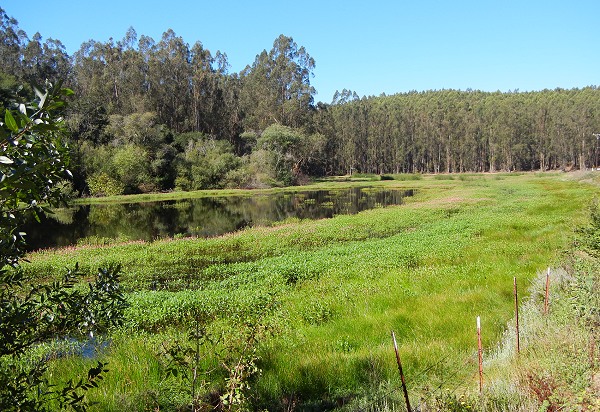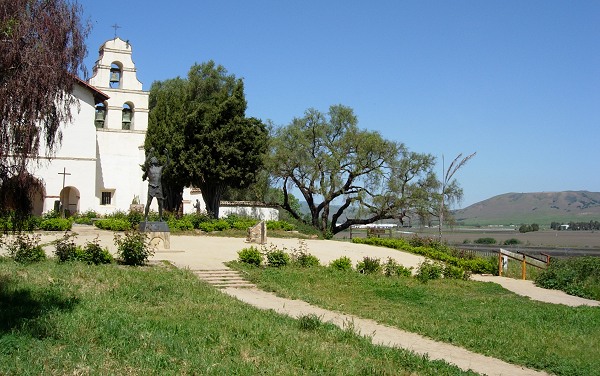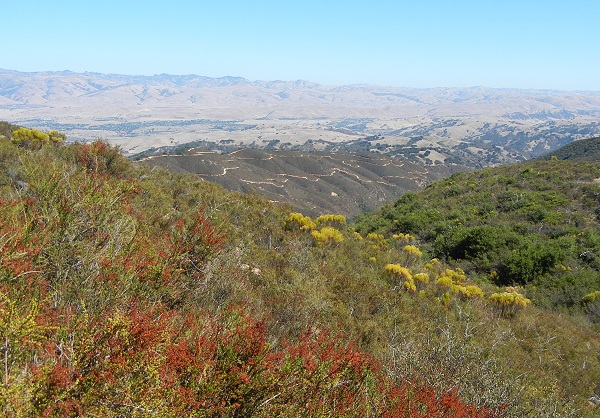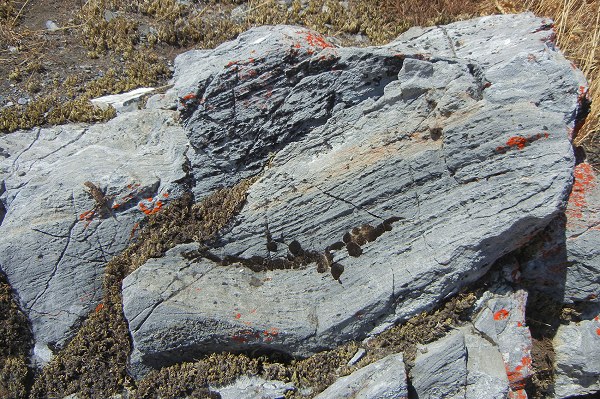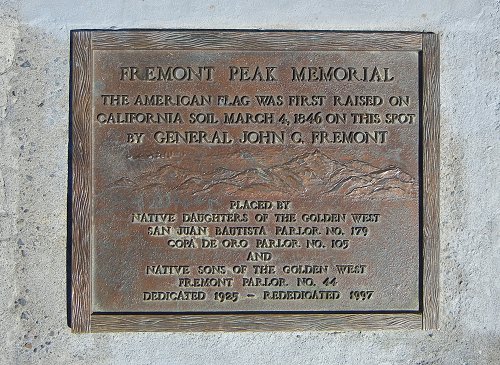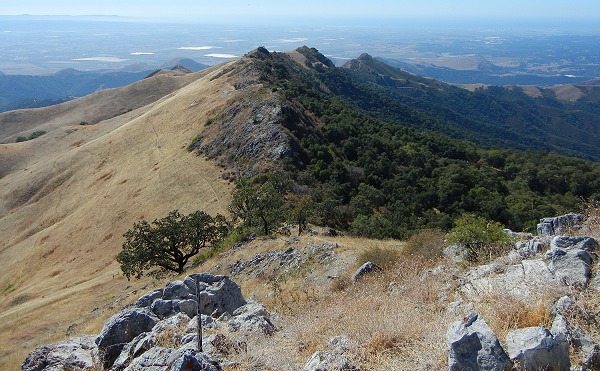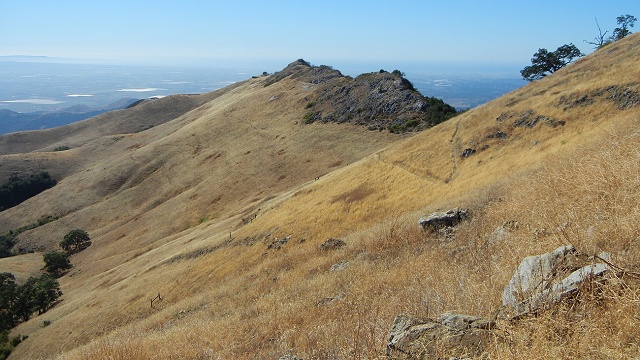
I often think of the Bay Area as a series of regions dominated by a particular mountain. San Francisco is under the sway of Mount Tamalpais, of course, and the East Bay is Mount Diablo territory. Farther south the skylines feature Black Mountain on the west and Mission Peak on the east, then Loma Prieta and Mount Hamilton respectively. And the area stretching from Gilroy to Monterey is the land of Fremont Peak. It makes a good focus for a day trip.
Let's have a look at the area in the online Geologic Map of the Monterey Quadrangle.
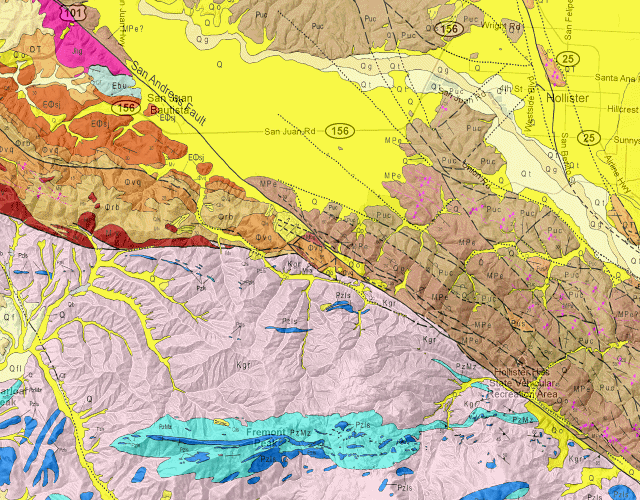
The San Andreas fault slashes across the area southwest of Hollister. To its east are young (Miocene and Pliocene, 7 to 4 million years old) sedimentary rocks that correlate with the huge young sequences in the Central Valley. To its west (on the north side) are older sedimentary rocks mostly dating from the Eocene and Oligocene epochs around 35 million years old. The southern part of the map area, where Fremont Peak lies, is granite and related rocks making up the Gabilan Range. You reach the peak through the town of San Juan Bautista, located directly under the "San Andreas fault" label.
If you have the time to find Anzar Road, north of San Juan Bautista, pay a visit to Anzar Lake, one of the best-developed sag ponds on the San Andreas fault. These form where fault movement causes the ground to sink below the water table.

